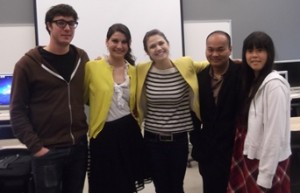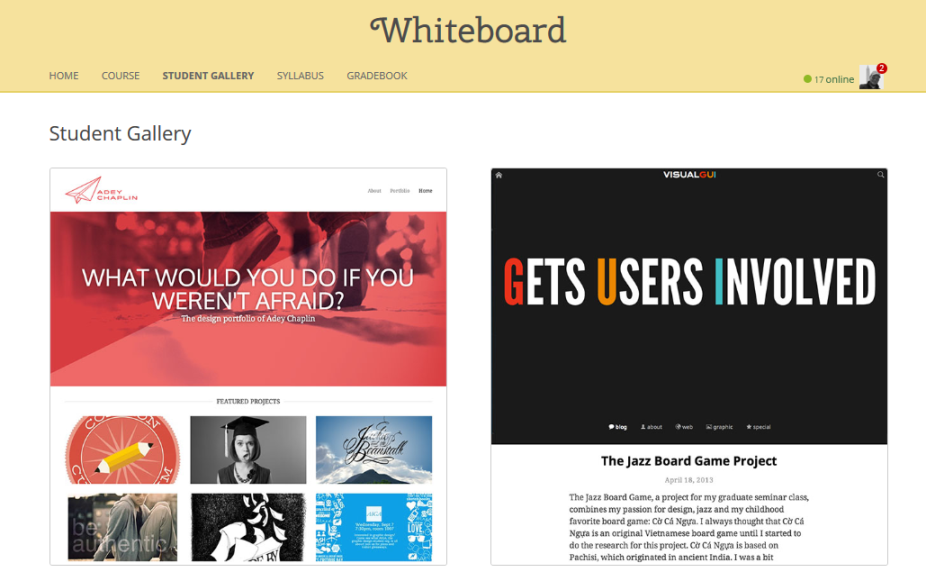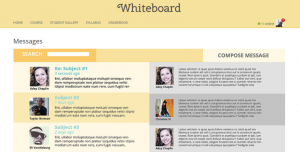What would your ideal online course be like?
Students in Professor Cui’s Spring session of AVT 420/619 Advanced Web Design considered this question carefully. Then, they got to work and developed it themselves.
One student produced online course included an open-access gallery where
student classwork was displayed to create a sense of community.
Preparing Students for the Emergent Job Market
These Art and Visual Technology (AVT) students came to Professor Cui’s class with experiences in the typical web design project – creating company websites. Professor Cui decided to have students develop an online course instead to gain broader insights into user behaviors and social, cultural, and contemporary issues in web communication.
Learn how to make elements of a webpage move
by watching this video found on one of the
student designed courses.
Additionally, Cui desired to prepare her students for the field of online course design since she sees it as a promising job market. Confirming the demand for designers of online courses, a company reached out to the AVT 420/619 students hoping to hire one for a Spanish course development project.
To be further prepared to enter the workforce, AVT 420/619 students compiled booklets that outlined their online course design processes and showcased their final products. These booklets can be added to the students’ portfolios and highlighted in job interviews.
Students Reflect on the Experience
“I learned a lot from creating an online course, but the greatest take away was definitely mapping out the site itself,” AVT 420 student, Sarita, recounts. “Trying to understand how someone might actually navigate their way through the site [was] a daunting task. Not only did I have to think about things from the students’ perspective, but I had to envision how the professor would use the site as well,” Sarita explained.

Another student, Paul, reported that “from the online course development experience, I learned how invaluable user testing is.” He expounded by saying, “What may seem like a logical solution to a designer may not be intuitive for the user, especially regarding basic functionality and navigation of an online course. Even limited testing of a few users reveals a wealth of information that should be incorporated into the design.”
Features of Student Designed Courses
The students all concurred that interaction within the class community was a one of the most critical facets of successful online learning. So, they came up with several original ideas to build a learning community. These include an open-access gallery displaying student classwork, a rotating student feature section, profiles of past and current students, and notifications of classmates’ entrance and exit into the course platform. The students also utilized typical course interaction tools such as message boards, discussion forums, and audio/video features.
Pictures are included in a student produced message board to help the students get to know one another.
Go ahead and take a look at the other features of the student created courses at http://www.petzrick.com/619/webfundamentals/.
With approximately 4,500 to 5,000 Mason students taking at least one Distance Education course each semester, undoubtedly many of you have opinions on what course features are essential to your success in online learning. Let us know! Submit a note about your favorite aspect of your Distance Education course on our twitter site @MasonOnline2.
 Mason Online
Mason Online
